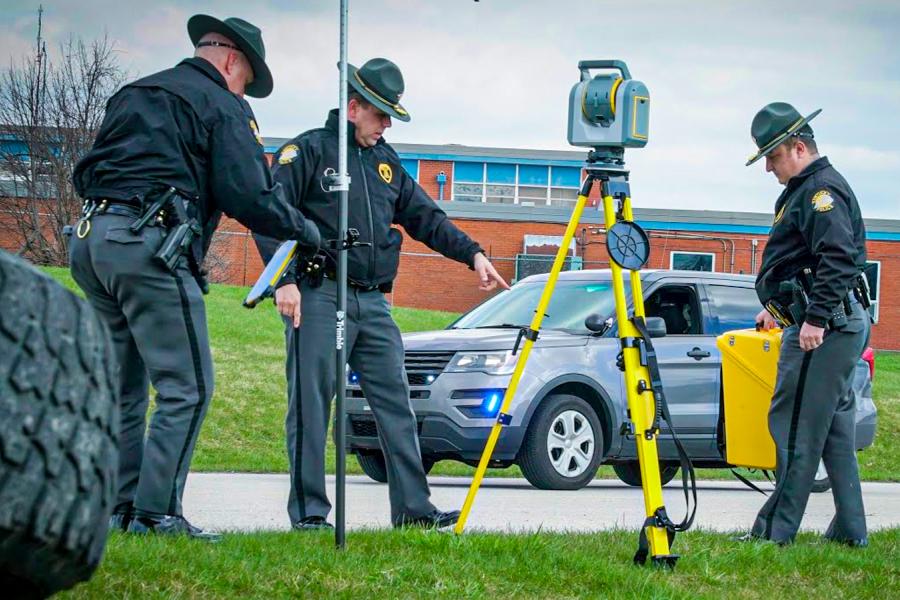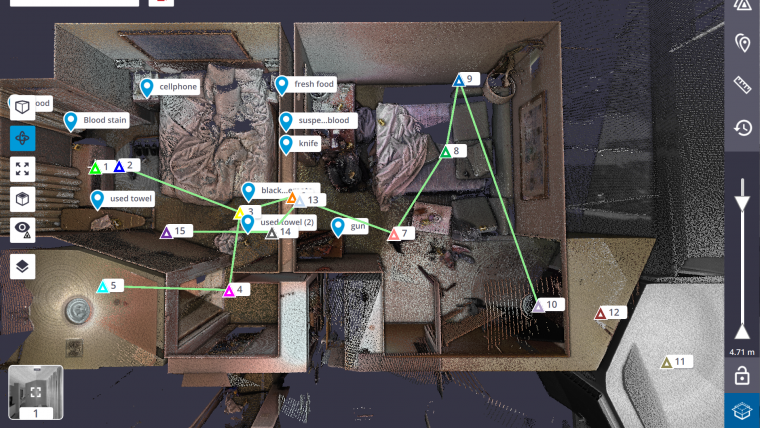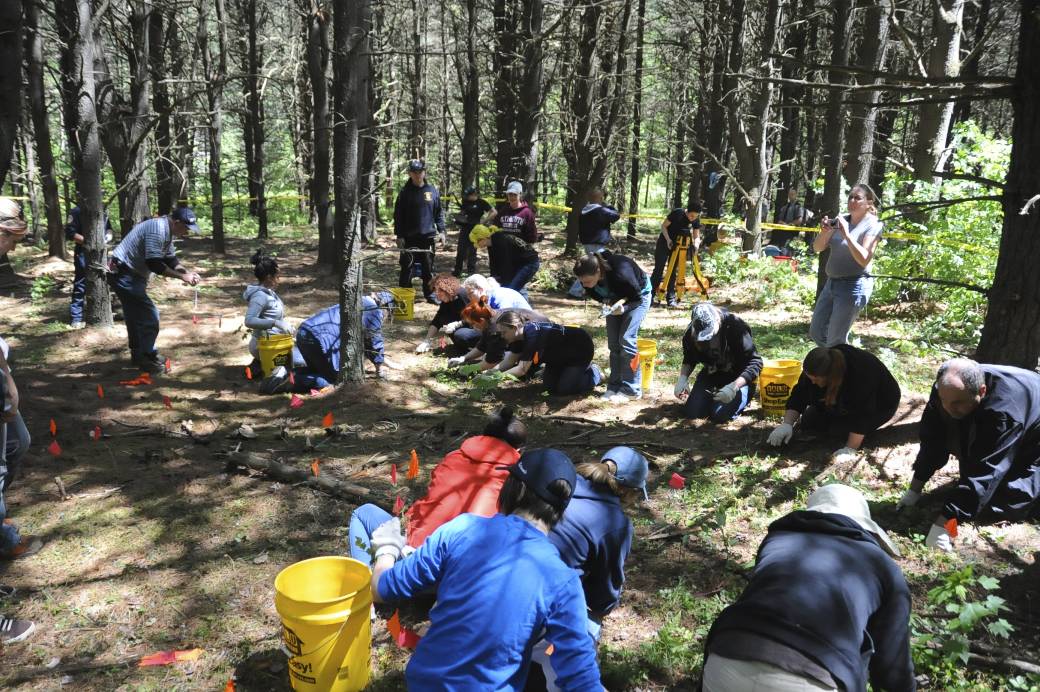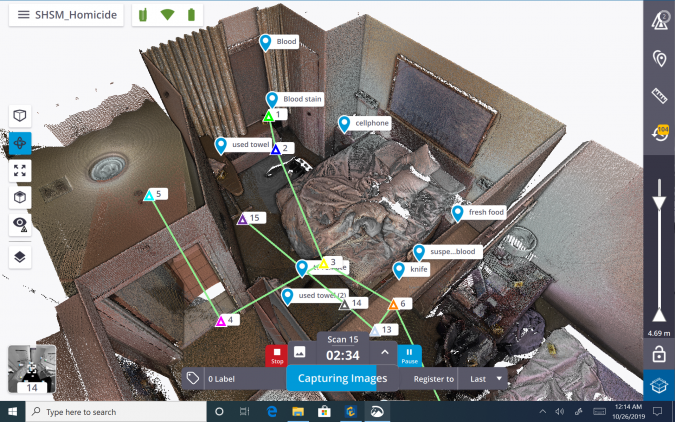3D Scanners finding use crime scenes, courtrooms

By KATE COIL
TML Communications Specialist
Crime scene photography has been an instrumental tool both in investigation and prosecution, but new technology is helping both law enforcement and prosecutors document crime scenes in meaningful ways.
3D laser scanners are now being used by departments across the country and in Tennessee to better document crime scenes in ways that cannot be captured in a simple photograph or video of the scene. While 3D scanning technology was initially invented for surveying, the uses of these scanners are being found in various disciplines from the way the Memphis Fire Department works to document local buildings for training exercises to the rebuilding of the Notre Dame Cathedral in Paris.
Wes Moster, director of communications for the Tennessee Highway Patrol, said law enforcement are discovering ways these scanners can benefit them as well, especially in documenting environments important to solving crimes.

"3D scanners capture highly accurate measurements of an environment as well as capturing photographs,” Moster said. “Some scanners are capable of capturing both visible light (normal photographs) as well as infrared or ultraviolet images, enabling technicians to see more than they could with their own eyes. In the survey and engineering world, the term ‘digital twin' describes the reality of the ability of 3D scanners to capture the entire scene, allowing investigators to return to the scene as it existed as many times as needed and for as long as needed without the need to hold a room, house, building, or roadway closed indefinitely.”
Moster said traditional still photography is still used initially to document crime scenes, particularly any items of interest investigators have found. A field sketch will be generated by those investigators so they can later review how those items of interest were positioned in the scene. Then, the work of the 3D scanner begins.
The scanner is positioned to capture as much of the scene as possible with a known measurement device placed visible to the scanner. Once this scan is done, the technician moves the scanner to the next position until the scene is fully documented. At that time, the technician will download and review the data collected and validate it through known measurements recorded.
“The registration process will then be performed in the appropriate 3D point cloud software,” Moster said. “The technician is then able to remove errant data or noise from the point cloud, add labels, add hyperlinks to either the still photographs or specific views from within the scan point cloud, and generate a viewer file that can be delivered to prosecutors or other investigators. The completed scan project can be used as demonstrative evidence allowing the investigators to describe the scene to a jury with the context of the environment as it was observed at the time.”
The scan can also be used as a reference point for investigators still working the scene without having to be at the scene itself.

“Because the measurements can be validated, the investigators can use the scan project as a 3D scaled diagram of the incident scene,” Moster said. “This enables the investigators to conduct mathematical analyses directly from the scan data. In some cases, the investigators may be able to use information captured by 3D scanners to conduct technical reconstructions of actions that occurred within the incident scene. The “snapshot” is a digital twin of the scene as it was observed by the investigators at the time of the investigation. This digital twin enables the investigators to return to the scene as many times as needed without the requirement to hold a scene in custody for the months or years of the investigation. Additionally, the digital twin can be used to demonstrate to a jury the context of the scene exactly as it was viewed by the investigators during the investigation.”
Moster said 3D scanners can capture millions of data points per second, allowing investigators to more accurately measure distance, angels, 360-views of the scene, and data that isn’t visible to the human eye. The ability of technicians to highlight, illuminate, and color various aspects of the scene also helps investigators better organize the data they have collected.
Outside of investigators, 3D scanners are also being used by prosecutors. In 2016, the Forensic Anthropology Center at the University of Tennessee was instrumental in a Department of Justice research project determining the effectiveness of 3D crime scene scanners for use by law enforcement and prosecution.
The study found law enforcement, legal professionals, and potential jurors found information collected by 3D crime scene scanners more reliable than simple photography or 2-D modeling, especially once they understood how the 3D process worked. Researchers noted many of those laypeople surveyed as part of the research project felt the 3D process “brought the [crime] scene to life” for them.
Moster said this can be a valuable tool when trying to secure a conviction. Moster said this type of evidence has already been used in a courtroom setting in Tennessee with 3D scans going before a jury in Clarksville.

“The prosecutor can have investigators to take the jury to the crime scene ‘virtually’ while also enabling the prosecutors to limit the jury’s ability to see information that may be prejudicial in nature,” Moster said. “Additionally, because the scan project is a true representation of the scene as it was at the time of the investigation, defendants that would, otherwise, be hesitant to plea to a crime may recognize the level of irrefutable evidence against them and enter a plea prior to a lengthy and costly trial.”
Forensic measurement tools have been used by law enforcement for years, and Moster said he sees 3D scanners becoming more commonplace for law enforcement. While “not the right tool for every job,” Moster said the 3D scanner has the potential to become an important tool in the toolbox for agencies.
“The limitations we have encountered in bringing information generated through 3D scanners to court are primarily the technological capabilities of the court rooms and the interest in technology on the part of the judge,” he said. “When scans have been used in an investigation, it may be possible to use snapshots from within the scan environment or simply the measurements that have been extracted from the scans. It may not be necessary for the jury to see the scans. Therefore, there is no current limitation to using these devices in criminal investigations or prosecutions. 3D scanners have been accepted along with all other common survey equipment by the federal courts and there should be no issue admitting information derived from them in the state court system.”
Like any piece of new technology, Moster said law enforcement agencies should
"Do not assume that the 3D scanner will effectively replace the Total Station Survey System as the sole means of documenting a crash or crime scene,” he said. “The 3D scanner is not the right tool for every job but is a tool that can be deployed when the job at hand dictates it. In the area of training, agencies should expect a long learning curve for the software that supports the 3D scanners. Additionally, the investigators or technicians assigned to operate the scanners need to ensure that they are working with the machines and software frequently in order to maintain proficiency.”
Read more about the UT research project’s findings on the implementation and cost-effectiveness of 3D scanning technology for crime scene use.

